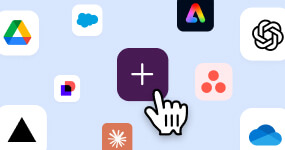关于此模板
团队管理和解决问题的能力决定着项目的成败。如果没有集中化的系统,团队很快就会无法及时了解未解决的问题。我们的问题日志模板可让项目经理、QA 工程师和产品团队在一个中心枢纽中记录、跟踪和解决问题。此模板有助于防止未解决的问题成为障碍,让你的团队专注于大局。
为什么问题日志模板很重要?
问题日志模板是你在整个项目生命周期中跟踪和管理问题的单一数据源。这种系统化的问题记录方法可以帮助项目经理和团队成员发现瓶颈,有效分配资源,并为问题解决保持明确的问责制。通过标准化的问题列表模板,团队可以快速获取每个障碍的基本详情,跟踪其进度,并跟进直至解决。
我们问题跟踪模板解决方案的优势
快速解决问题是保持项目势头和成功交付成果的关键,但你无法解决未跟踪的问题。我们的问题跟踪模板解决方案将强大的自动化与直观的工作流程相结合,可以帮助团队有效地识别、记录和解决问题。你的团队已经在 Slack 中开展协作,通过在 Slack 中集中管理问题,你可以缩短响应时间,提高可见性,并确保对每个报告的问题进行持续的跟进。
下面介绍了我们的未解决问题列表模板如何改变团队处理问题的方式:
集中化问题管理
我们的问题日志模板是一种集中化解决方案,让你能够高效管理内部和外部项目问题。借助此模板,项目经理和团队成员可以系统地记录、跟踪和上报需要解决的问题,确保问题得到及时有效的处理。通过将所有与问题相关的通信内容整合到一个地方,此模板不仅可以增强团队协调,还能改善整体项目规划和执行过程。
简化式问题报告
此模板使团队成员能够轻松记录出现的问题。记录每个问题时,都可以添加详细描述、目标日期和优先级,确保项目经理拥有规划解决方案所需的全部信息。这种简化的报告流程鼓励团队成员及时报告问题,有助于跟踪项目进度并防止延误。
自动化问题跟踪
我们的问题日志模板包含自动化问题跟踪器模板,新问题一经报告即被添加。此跟踪器模板可作为当前项目问题的实时清单,让项目团队能够查看进度、分配资源并高效解决问题。利用自动状态更新和影响分析等功能,轻松管理项目生命周期中出现的问题。此外,这个资源管理工具有助于确保不遗漏任何问题。
引导式问题提交
为协助团队成员准确报告问题,此模板包含如何提交问题的画板。该指南提供分步说明,详细介绍了报告问题时应包含的内容,例如描述、影响和重现步骤。通过标准化问题报告,此模板提高了提交质量,使问题更容易得到解决,同时确保人员和项目步入正轨。对于需要在项目计划的各个阶段跟踪多个问题的项目团队来说,此功能特别有用。
增强式项目管理
将问题跟踪模板管理纳入工作流程,可以轻松与其他项目管理模板和工具集成,例如工作管理系统。这种集成可确保在团队中顺利传递信息,实现有效的规划和资源分配。无论你处理的是项目问题、资源管理还是跟踪项目生命周期,这个免费的问题跟踪工具都能提供可靠、有条理的解决方案。
使用此模板可以增强团队跟踪问题、记录解决方案和保持项目势头的能力。此模板专为项目经理、产品经理、开发人员和其他团队成员设计,用于简化复杂的工作流程,让你能够专注于最重要的事情:成功交付项目。
问题管理模板应包含哪些内容?
有效的问题管理模板应包含跟踪并最终解决问题所需的全部信息。我们的模板结构包含以下高效跟踪问题所需的关键字段:
- 问题名称:识别问题,便于团队成员引用和搜索特定问题。
- 状态:使用“新建”、“已分类”、“进行中”、“受阻”、“完成”和“待办”等预定义阶段来跟踪每个问题的当前状态,以便轻松在看板视图中直观监控进度。
- 严重程度:将问题分类为“高”、“中”或“低”优先级,帮助团队专注于首先解决最严重的问题。
- 详情:一个文本字段,团队成员可以在此字段中提供问题的详细描述,包括重现步骤、预期行为以及任何相关的屏幕截图或支持文档。
- 提交者:自动记录报告问题的团队成员姓名,为后续跟进提供背景信息(如需更多信息)。
- 提交日期:时间戳记录报告问题的日期,帮助项目经理跟踪问题时间线并相应地确定任务优先级。
- 被分派人员:将解决问题的职责分派给特定的团队成员,为每个任务指定明确的所有权和问责制。
我们简化的问题跟踪模板能够恰到好处地记录详情,而不会产生不必要的复杂性。通过使用此模板,项目经理可以在整个过程中高效地确定优先级、跟踪和解决问题,并确保完全的问责制和可见性。
问题列表模板最佳实践
使用问题列表模板不仅仅是填写表单就完了那么简单。以下是优化问题管理的一些最佳实践:
- 及早确定优先级:根据对项目的潜在影响分配优先级。高优先级问题应优先得到处理,以避免出现瓶颈。
- 使用清晰的命名约定:标准化问题名称,让团队成员能够轻松搜索并快速识别相关问题。
- 提供充分的背景信息:在详细描述中包含相关屏幕截图和重现步骤可减少困惑并加快问题解决。
- 确立明确的所有权:对于每个问题,分派一名专门的负责人,负责提供更新并推动问题解决。
- 自动化更新:使用 Slack 工作流程或第三方集成来自动发送提醒和状态更新,确保每个人都能及时了解情况。
- 定期审查:维护状态更新计划,帮助每个人持续了解进度和障碍。
- 记录解决步骤:记录解决每个问题所采取的步骤,为将来解决类似问题创建有价值的知识库。
添加第三方集成,完善未解决问题模板
将 Slack 问题跟踪系统与团队已在使用的工具集成,改进整体项目管理。以下是一些强大的第三方集成示例,可增强你的问题跟踪功能:
Google Workspace
将 Google 云端硬盘中的相关文档、电子表格和演示文稿直接无缝附到问题日志中。团队成员可以实时协作处理解决方案文档,同时保持版本控制并将所有与问题相关的资源整理到一个地方。
Zoom
通过 Slack 安排 Zoom 通话,即时上报紧急问题,缩短对于严重问题的响应时间。此外,将会议中的重要问题讨论转换为问题日志中的可操作项目。
Asana
使用 Asana 将记录的问题转换为可执行的项目任务,无需切换背景信息。直接在 Slack 中建立和更新任务,自动同步状态更新,并保持问题解决与更广泛的项目时间线之间的一致性。









